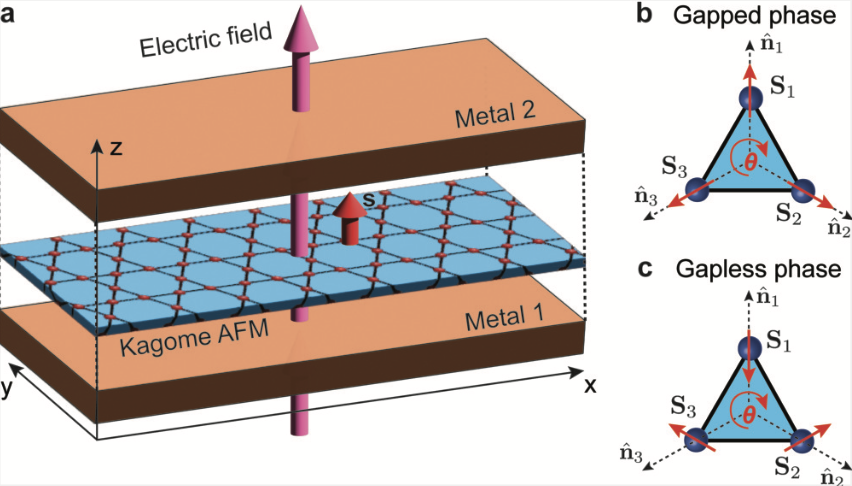
The terahertz (THz) technology gap refers to a frequency range within the electromagnetic radiation spectrum where existing technologies struggle to generate and detect radiation efficiently. In a recent Physical Review Letters article, we demonstrated that certain antiferromagnetic materials manifest unique auto-oscillations – self-sustained oscillations that emerge without needing a periodic external stimulus. Even more intriguing, these auto-oscillations can be precisely controlled through electrical means across an extraordinarily broad frequency spectrum, spanning from 0 Hz to THz frequencies. These electrically controlled self-oscillations facilitate a highly efficient transformation of direct currents into THz alternating currents, which, in turn, can be harnessed to generate THz electromagnetic radiation. The underlying Kagome lattice structure, an inherent feature of a specific subset of noncollinear antiferromagnets, plays a pivotal role in our prediction. This lattice structure gives rise to two distinct ground states, each characterized by its unique chirality. We show that the correct chirality of the ground state represents the key element for achieving the predicted high-bandwidth auto-oscillations. Consequently, our findings shed light on the remarkable potential of noncollinear antiferromagnets in providing exceptional THz functional components, representing a significant stride toward bridging the current THz technology gap.
